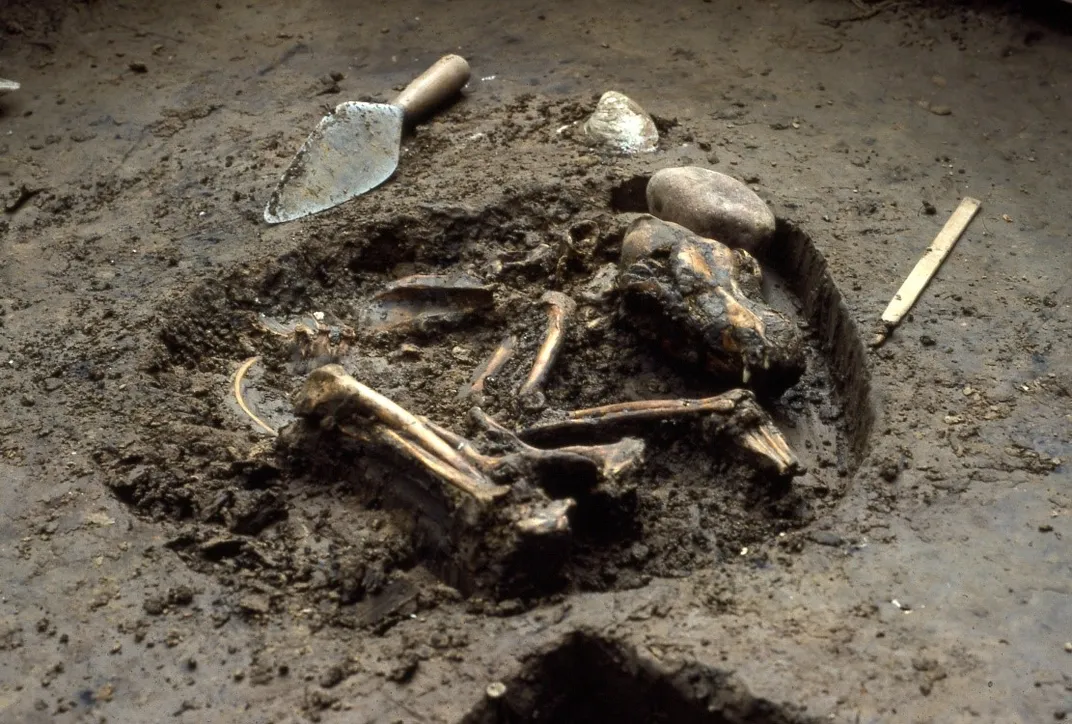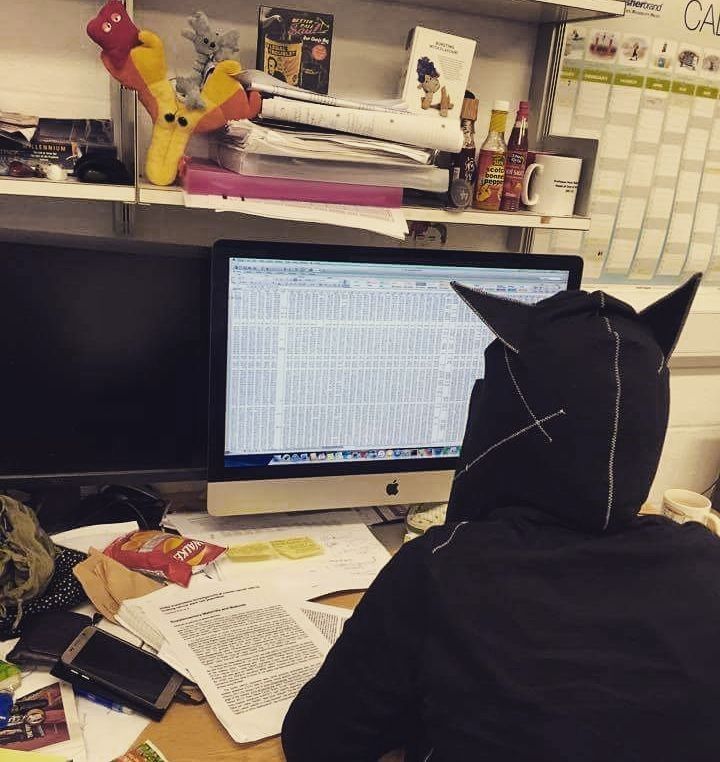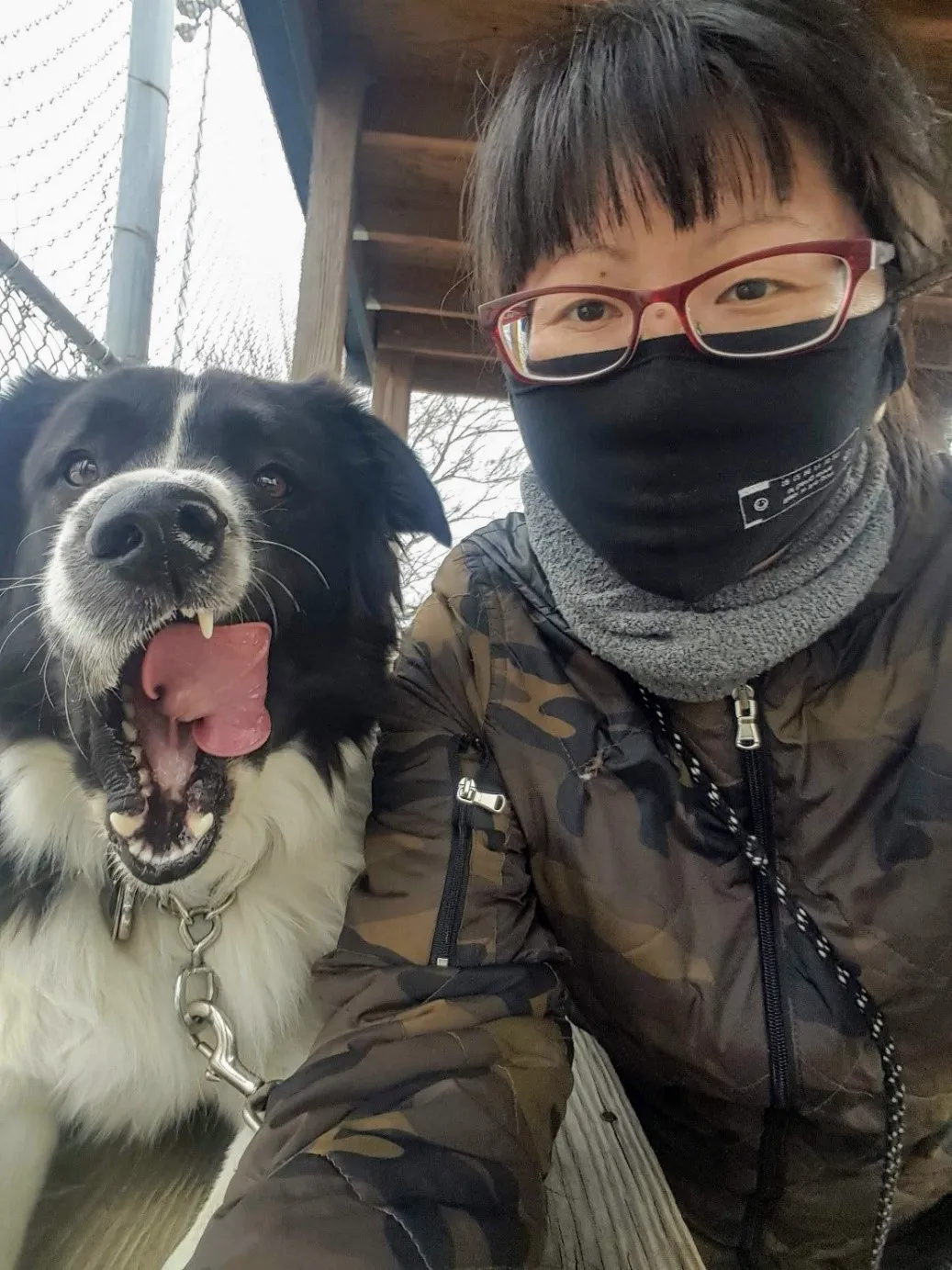NATIONAL MUSEUM OF NATURAL HISTORY
Meet the Scientist Studying How Dogs Evolved From Predator to Pet
Learn about how humans of the past helped build the bond between us and our favorite furry friends.
/https://tf-cmsv2-smithsonianmag-media.s3.amazonaws.com/blogging/featured/Two_wolves_fight_each_other_while_others_eat_a_bison.jpg)
Thousands of years ago, dogs as we know them didn’t exist. Instead, humans and wolves lived separate lives while inhabiting the same lands. Eventually, their proximity evolved into the companionship we have today. But despite the long history between humans and dogs, scientists are still unsure of how this friendship began.
For National Puppy Day, we chatted with Audrey Lin, a Peter Buck postdoctoral fellow and evolutionary molecular biologist at the Smithsonian’s National Museum of Natural History, to learn about how humans of the past helped build the bond between us and our favorite furry friends.
What is domestication and how did dogs become household pets?
Domestication is when humans take reproductive control over another species and direct its reproduction in a certain way.
The scenario we imagine is that, at some point, there was a wolf that wasn’t as scared of humans as the other wolves and it started creeping closer to human settlements to seek food. Then it went on from there. It was a mutual relationship between humans and the precursor to the dog in the beginning.

How do you study the history of our relationship with our four-legged friends?
There’s two ways of going about it. We can look at either mitochondrial genomes or whole genomes. Mitochondrial genomes, or the genetic information found in mitochondria, are much easier to recover because they are much shorter. We’re talking about 16,000 base pairs versus billions of base pairs. There are markers in mitochondrial genomes that allow us to answer questions about dogs and ancient dog-like carnivores on a population level. But mitochondrial genomes are only a fragment of the complete picture. There’s a lot of demographic information that you can’t infer from mitochondrial DNA.
If we’re lucky enough to recover whole genomes from ancient dogs, then we can get a much bigger picture of the complexities of their evolutionary history in relation to many different populations. This includes admixture, which involves interbreeding with different populations, and introgression – which involves multiple instances of hybridizing with a different species, like the grey wolf. We can look at certain genes and certain traits that developed in a given population. There are so many different factors you can look at with a whole genome that you can’t with just mitochondrial DNA.
Do domesticated animals have common traits?
There are certain traits which are seen as almost universal in many animals. Things like tamer behavior, a smaller brain, floppy ears, a curly tail and changes in skin and fur pigmentation like spots. They allow us to differentiate between what’s wild and what’s considered domesticated. There is a lot of debate as to why these traits are seen in all the different kinds of animals we’ve domesticated, not just dogs. It’s likely that when the genes involved with domestication are expressed, they also manifest with these different traits that are not seen in the wild ancestors. It’s almost like a cute byproduct.
What makes dogs different from other domesticated animals?
Dogs are unique in comparison to other domesticated animals because it appears that their breeding with its wild relative was restricted. If you look at ancient dog genomes, there is gene flow from dogs to wolves but not the other way around which is very unusual. If you look at early domesticated pigs, they mixed with wild boar all the time. The same is true for goats and sheep.
This probably has to do with the special relationship humans have with dogs. We live much more closely with them and the behaviors we want in dogs are much more restrictive. You don’t want your dog to breed with a wolf and then have puppies that are more fearful of people.

What inspired you to become an evolutionary molecular biologist and study dog domestication?
I came to ancient DNA and working with dogs in a non-straightforward way. My background is primarily genetics, virology and microbiology. During my PhD at Oxford, I had the opportunity to work with Dr. Greger Larson who researches evolutionary genomics, ancient DNA and domestication. At the time, he and his group had written a paper that put forward some evidence that there may have been two origins of dog domestication instead of one. It was rather controversial and I was really excited to work with them. I’m still working with Greger and other collaborators from that group on ancient dogs.
I’ve always been attracted to the idea of looking at archeological remains or historical remains as time capsules to understand our genetic past. It’s incredible what technology can allow us to recover when it comes to ancient DNA. Ancient dogs and domestication become more and more interesting the more I realize how very little we know and how little information we have.

What has your research taught you about our relationship with dogs today?
For me, it makes me feel more connected to the humans from the past. Dogs were most likely domesticated more than 20,000 years ago and it’s quite cool and humbling to look into the really intimate and loving relationships that people 20,000 years ago had with their dogs — especially since people have the same relationship with their dogs today. Also, learning more about ancient dogs and domestication makes us able to better appreciate dogs today. It’s seeing that continuity of our close relationship to dogs.
Do you have a dog?
I currently live with a retired Smithsonian curator and she has a dog named Pip. I had dogs as a kid but, before Pip, I’d never had a close relationship with a dog before. With Pip, who is a border collie mix, I now really understand people’s obsession with dogs. The sensitivity that Pip has to other humans and how incredibly smart he is, is really amazing. It brings me closer to what I’m studying.
I’ve never felt like that in all my years of being a biologist. For example, I also study viruses and I find them endlessly fascinating on an intellectual level. But the emotion you associate with something intellectually interesting versus having a real, personal relationship with a representative of a species you’re studying, is so different. It’s something new and quite cool to me.
Meet a SI-entist: The Smithsonian is so much more than its world-renowned exhibits and artifacts. It is a hub of scientific exploration for hundreds of researchers from around the world. Once a month, we’ll introduce you to a Smithsonian Institution scientist (or SI-entist) and the fascinating work they do behind the scenes at the National Museum of Natural History.
Related Stories:
Get to Know the Scientist Studying Ancient Pathogens at the Smithsonian
How Ancient DNA Unearths Corn’s A-maize-ing History
Intern Helps Find First Vertebrate With Two “Powerhouse” Genomes
Safety Suit Up: New Clean Room Allows Scientists to Study Fragile Ancient DNA

